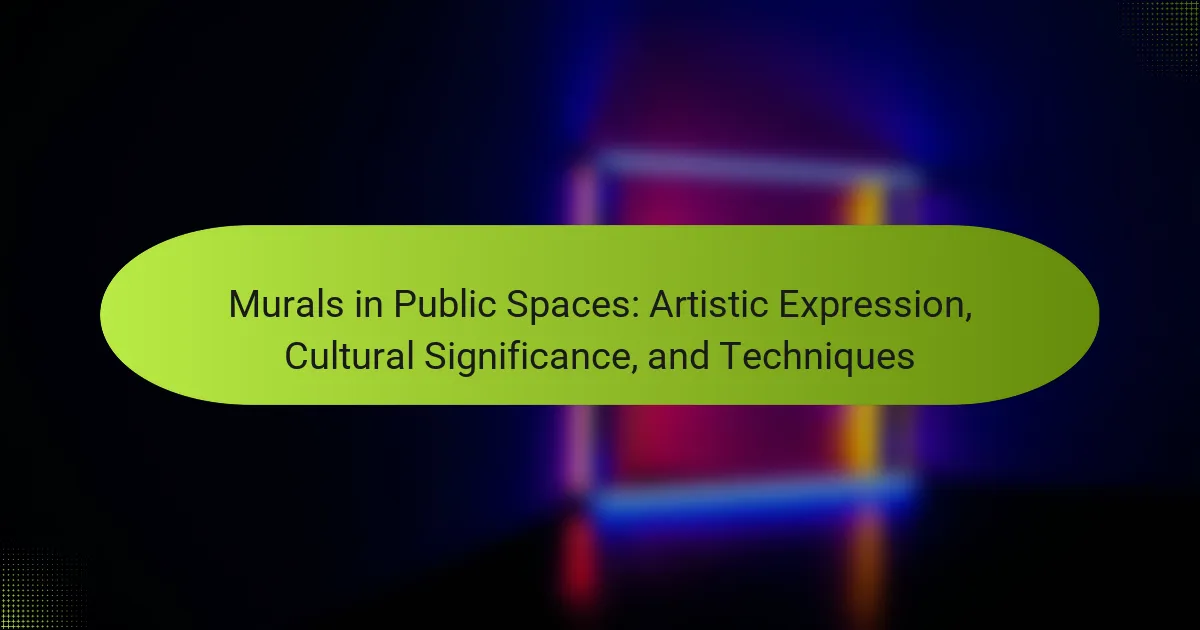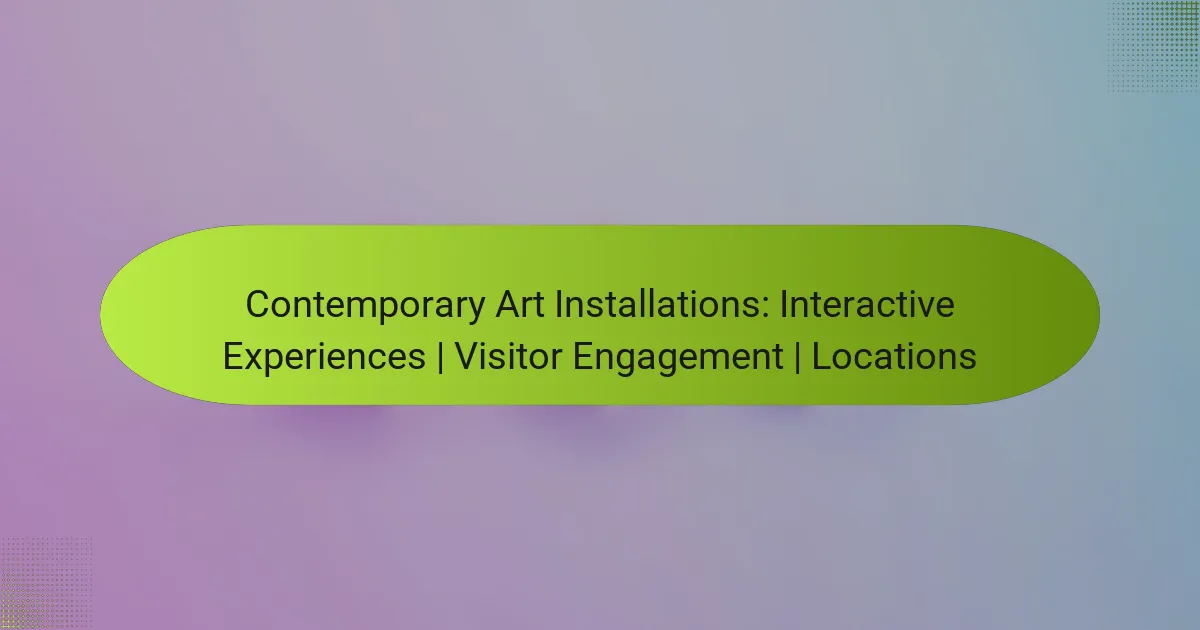Graffiti serves as a powerful form of artistic expression, reflecting cultural shifts and community identities. This article explores the historical evolution of graffiti, examining its diverse styles and the changing legal perspectives surrounding it. From ancient markings to modern street art, graffiti’s journey illustrates its significance in urban environments. Additionally, the article discusses the legal challenges artists face and how community involvement can reshape perceptions of graffiti.
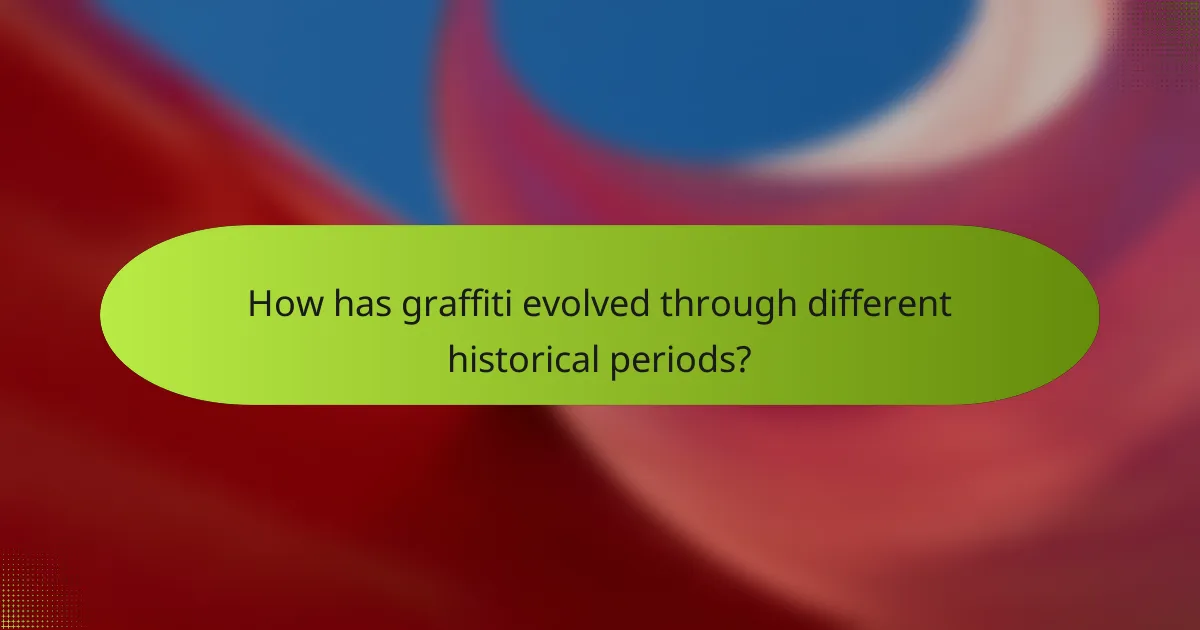
How has graffiti evolved through different historical periods?
Graffiti has evolved significantly across historical periods, reflecting cultural changes and societal attitudes. In ancient times, graffiti served as a form of expression and communication, often seen in Roman ruins and cave paintings. The rise of modern graffiti began in the late 1960s and 1970s, primarily in urban areas, where it transformed into a vibrant art form associated with rebellion and identity.
In the 1980s, graffiti gained mainstream attention through street art movements, with artists like Keith Haring and Jean-Michel Basquiat bringing it into galleries. The legal perspectives surrounding graffiti have also shifted; what was once considered vandalism is increasingly recognized as a legitimate art form. Today, cities worldwide are adopting policies that support street art, acknowledging its role in urban culture while balancing community concerns.
What were the key movements that shaped graffiti culture?
Key movements that shaped graffiti culture include the emergence of hip-hop in the 1970s, the influence of street art in the 1980s, and the rise of political graffiti in the 1990s. The hip-hop movement integrated graffiti as a form of self-expression and identity. Street art expanded the medium beyond traditional graffiti, incorporating diverse styles and techniques. Political graffiti emerged as a voice for social issues, reflecting community struggles and activism. Each movement contributed to graffiti’s evolution, shaping its aesthetic and cultural significance.
Which artists significantly influenced the evolution of graffiti?
Artists such as Jean-Michel Basquiat, Keith Haring, and Banksy significantly influenced the evolution of graffiti. Jean-Michel Basquiat brought fine art elements into street art, merging social commentary with vibrant visuals. Keith Haring’s bold, cartoonish style made graffiti accessible and relatable, while Banksy’s satirical approach elevated graffiti to a global phenomenon. Each artist contributed unique attributes that shaped the perception and acceptance of graffiti in contemporary culture. Their innovative techniques and thematic depth have left a lasting legacy in the art world.
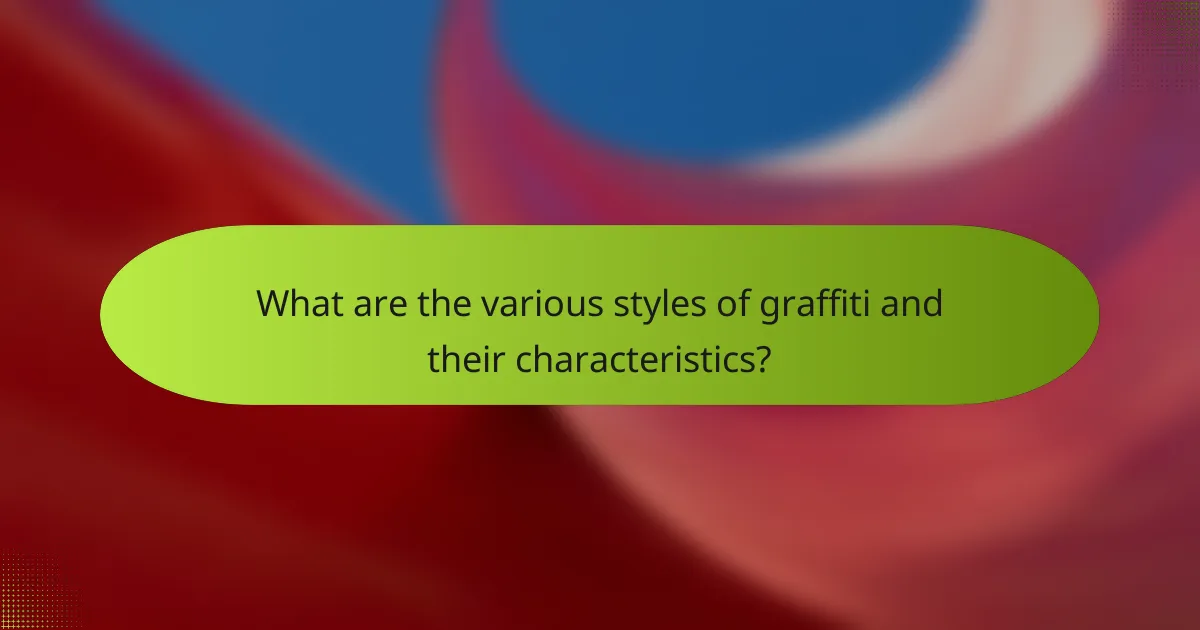
What are the various styles of graffiti and their characteristics?
Graffiti features various styles, each with distinct characteristics. Key styles include:
1. Tagging: Simple signatures or symbols, often the most basic form of graffiti.
2. Throw-ups: Bubble letters or quick designs, larger than tags but still executed quickly.
3. Pieces: Elaborate works that showcase artistic skill, often colorful and detailed.
4. Stencils: Pre-cut designs applied quickly, allowing for precise shapes and images.
5. Wheatpaste: Posters or prints pasted onto surfaces, often conveying messages or art.
6. Murals: Large, intricate paintings that cover entire walls, usually commissioned or legal.
Each style reflects a unique approach to expression within the graffiti culture.
How do street art and graffiti differ in style and intent?
Graffiti and street art differ significantly in style and intent. Graffiti often focuses on tags and lettering, emphasizing personal expression and identity, whereas street art encompasses a broader range of artistic styles and messages, often aiming for social commentary or aesthetic appeal.
Graffiti typically prioritizes quick execution and visibility, while street art may involve detailed planning and community engagement. The intent behind graffiti is frequently rooted in rebellion or self-promotion, contrasting with street art’s aim to provoke thought or beautify urban spaces.
Both forms have evolved over time, reflecting cultural shifts and societal issues, yet they remain distinct in their approaches to urban expression.
What are the most prominent regional styles of graffiti?
The most prominent regional styles of graffiti include New York City, Los Angeles, London, Paris, and Berlin. Each style reflects local culture and artistic influences.
New York City graffiti, known for its vibrant colors and complex lettering, emerged in the late 1960s. Los Angeles features a blend of street art and muralism, often incorporating social themes. London graffiti is characterized by its political messages and stencil art, popularized by artists like Banksy. Paris showcases a mix of traditional and contemporary styles, often with a romantic flair. Berlin’s graffiti scene is marked by its diverse techniques and strong political commentary, influenced by the city’s history.
Which techniques are commonly used in graffiti creation?
Common techniques in graffiti creation include tagging, throw-ups, stencils, and murals. Tagging involves simple signatures or symbols, while throw-ups are more elaborate, often using bubble letters. Stencils allow for precise designs and quick application. Murals are large-scale artworks that can convey complex themes. Each technique reflects the artist’s style and intent, showcasing the diversity within graffiti culture.
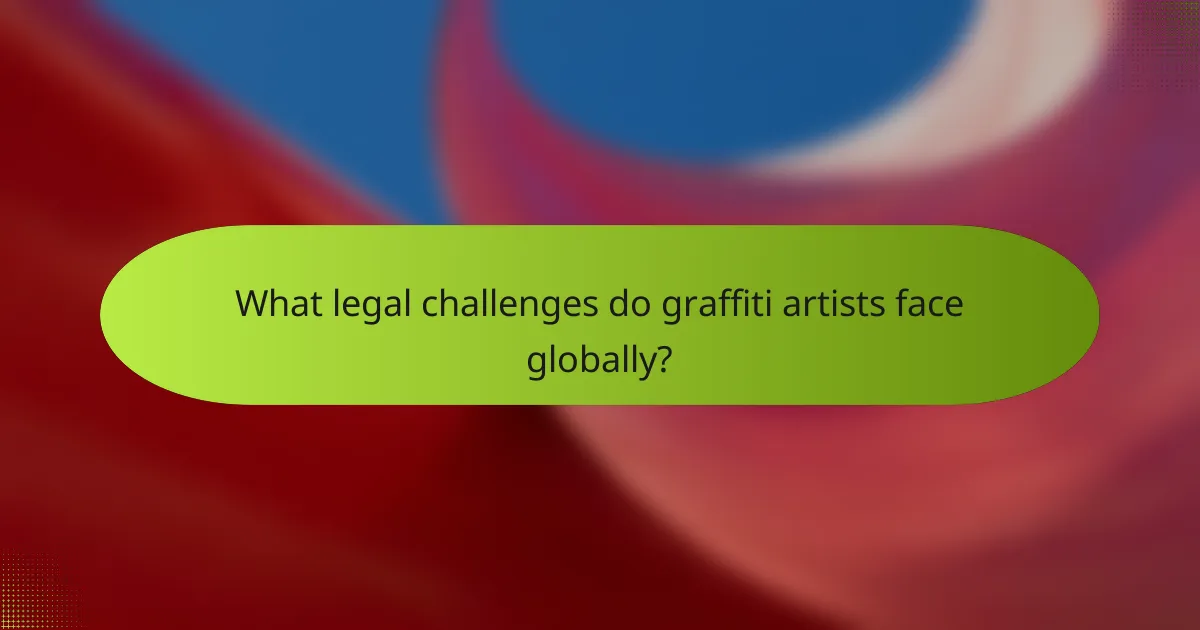
What legal challenges do graffiti artists face globally?
Graffiti artists face numerous legal challenges globally, including vandalism charges, property rights issues, and restrictions on public spaces. These challenges vary by country, impacting artists’ freedom of expression. In many regions, graffiti is viewed as a crime rather than art, leading to fines or imprisonment. Additionally, copyright disputes arise when artists’ works are removed or altered without consent. As urban environments evolve, legal frameworks struggle to keep pace with graffiti culture, complicating the landscape for artists.
How do laws regarding graffiti differ across countries?
Laws regarding graffiti vary significantly across countries, reflecting cultural attitudes and enforcement priorities. In some nations, graffiti is viewed as vandalism, leading to strict penalties, while others embrace it as a form of artistic expression.
For example, in Germany, graffiti is often legally protected under freedom of expression laws, provided it does not deface private property. Conversely, in the United States, laws can vary by state; some cities impose heavy fines and criminal charges for graffiti, while others have designated areas for street art.
Additionally, countries like Brazil have seen graffiti evolve into a recognized art form, with artists gaining public support and even commissions. In contrast, nations with strict anti-graffiti laws, such as Singapore, enforce severe penalties, including caning for repeat offenders.
Overall, the legal perspectives on graffiti reflect a complex interplay of cultural values, legal systems, and public sentiment, influencing how graffiti is created and perceived worldwide.
What are the implications of anti-graffiti legislation?
Anti-graffiti legislation primarily aims to reduce vandalism and promote urban aesthetics. These laws can lead to increased penalties for offenders, impacting community perceptions of graffiti as art versus crime. Cities may invest in public art programs to mitigate negative perceptions, fostering a dialogue about the cultural significance of graffiti. Additionally, such legislation can influence urban planning and community engagement initiatives, promoting cleaner public spaces while balancing artistic expression.

How is graffiti perceived in urban communities?
Graffiti is often seen as a form of artistic expression in urban communities, though perceptions vary widely. Some view it as a vibrant representation of culture, while others see it as vandalism. Historically, graffiti has evolved from ancient markings to contemporary street art, reflecting societal issues and local identities.
Legal perspectives on graffiti differ across regions. In some cities, it is celebrated and protected as public art, while in others, it faces strict penalties. The unique attribute of community involvement in graffiti projects can transform perceptions, fostering a sense of ownership and pride among residents. As a result, graffiti can serve as a catalyst for dialogue about urban space and community identity.
What role does graffiti play in community identity and expression?
Graffiti serves as a powerful medium for community identity and expression. It reflects local culture, social issues, and shared experiences, fostering a sense of belonging among residents. Moreover, graffiti often acts as a voice for marginalized groups, allowing them to communicate their narratives and perspectives. This art form can transform public spaces, making them vibrant and engaging while also sparking dialogue about urban environments. Ultimately, graffiti contributes to a community’s unique identity and collective memory.
How do public opinions on graffiti vary by region?
Public opinions on graffiti vary significantly by region due to cultural, historical, and legal factors. In urban areas, graffiti is often seen as a form of artistic expression, while in rural regions, it may be viewed primarily as vandalism.
Cities like New York celebrate graffiti as a vital part of street culture, often hosting festivals and exhibitions. In contrast, regions with stricter anti-graffiti laws perceive it negatively, associating it with crime and disorder.
Public attitudes can shift based on local community initiatives that promote graffiti as a legitimate art form. For instance, cities that have designated legal walls for graffiti artists tend to foster more positive perceptions.
Additionally, the demographic composition of a region influences opinions; younger populations may embrace graffiti more than older generations. This complex interplay of factors shapes how graffiti is perceived across different areas.
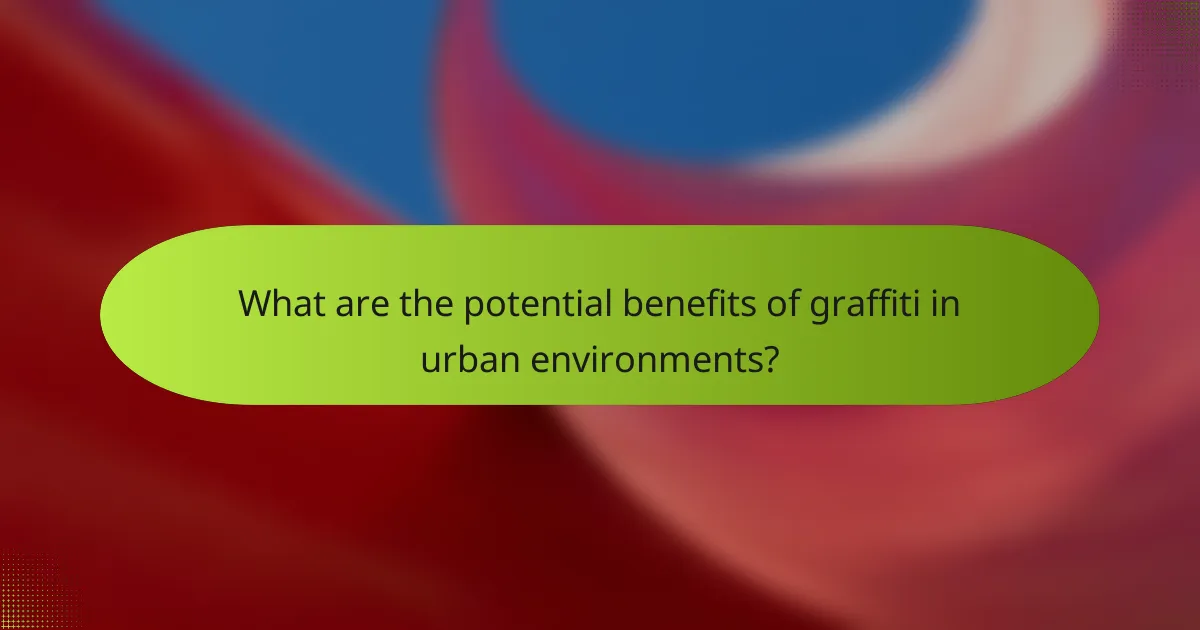
What are the potential benefits of graffiti in urban environments?
Graffiti can enhance urban environments by fostering community identity, promoting artistic expression, and revitalizing neglected spaces. It serves as a platform for social commentary and cultural dialogue. Moreover, well-executed graffiti can increase foot traffic and attract tourism, contributing to local economies. In some cases, cities have embraced graffiti as a legitimate art form, establishing designated areas for artists to showcase their work. This recognition can help reduce vandalism and encourage positive community engagement.
How can graffiti contribute to urban revitalization?
Graffiti can significantly contribute to urban revitalization by transforming neglected spaces into vibrant art hubs. This process enhances community identity and fosters local pride.
Public murals and street art attract tourism, stimulating economic growth. Additionally, collaborative graffiti projects engage residents, encouraging social cohesion and reducing crime rates.
Cities embracing graffiti as an art form often see increased investment in public spaces. This leads to improved infrastructure and beautification efforts, creating a more inviting environment for residents and visitors alike.
Ultimately, graffiti serves as a catalyst for change, breathing new life into urban areas and promoting cultural expression.
What are the educational opportunities associated with graffiti art?
Graffiti art offers diverse educational opportunities, including art history, social justice, and urban studies. Programs often explore its historical evolution, styles, and legal perspectives, fostering critical thinking. Workshops and courses teach techniques and encourage creativity, while community projects promote collaboration and cultural expression.
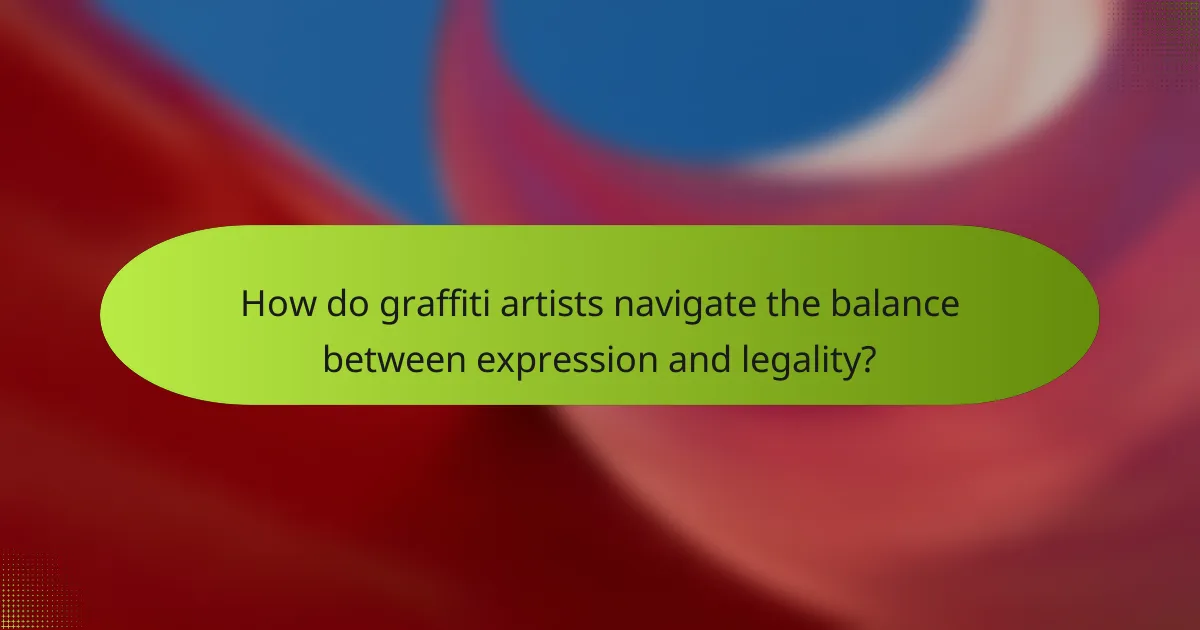
How do graffiti artists navigate the balance between expression and legality?
Graffiti artists often navigate the balance between expression and legality by understanding local laws and community sentiments. They frequently choose locations that allow for legal expression, such as designated walls or festivals. This approach enables them to showcase their art while minimizing legal repercussions. Artists may also engage in dialogue with property owners to gain permission, thus fostering a collaborative relationship. Ultimately, the balance hinges on the artist’s ability to creatively express themselves within the boundaries of legal frameworks.
What strategies do graffiti artists use to avoid legal repercussions?
Graffiti artists use various strategies to minimize legal risks. They often choose less visible locations, work during late hours, and develop quick techniques for execution. Many also utilize legal walls or obtain permission from property owners. Additionally, some artists engage in community projects to build positive relationships and reduce the likelihood of legal action.
How can artists advocate for their rights and the recognition of graffiti as art?
Artists can advocate for their rights and the recognition of graffiti as art by engaging in community dialogue, collaborating with legal experts, and participating in art exhibitions. They should document their work and its impact on culture to strengthen their claims. Raising awareness through social media can mobilize support and challenge negative perceptions. Legal frameworks vary, but understanding local laws can help artists navigate their rights and promote graffiti’s artistic value. This approach emphasizes graffiti’s unique cultural contributions while addressing legal challenges.
What best practices should emerging graffiti artists follow to succeed?
Emerging graffiti artists should focus on honing their unique style, understanding local laws, and building a strong network. Developing technical skills through practice and studying various styles enhances creativity. Familiarity with legal perspectives prevents potential issues with authorities. Engaging with local art communities fosters collaboration and exposure. Lastly, maintaining an online presence through social media showcases work and connects with a broader audience.

